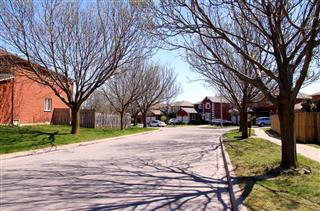
Lease contract with option to buy may help real estate agents sell homes, since the inability to procure sub-prime loans has resulted in a glut in the housing market.
A lease is a written agreement between the owner of an asset and an entity willing to pay rent for the use of the same. The owner of the asset is known as the ‘lessor’ while the counterparty is referred to as the ‘lessee’. The lessor receives income in the form of rent, while the lessee benefits from the use of the asset. A lease can be classified as a capital lease or an operating lease.
What is an Option?
An option is a contract that gives the buyer the right to buy/sell the underlying asset at an agreed upon price during a certain period of time, or on a specific date. Options can be classified as call or put options. The holder of a call option purchases the right to buy the asset at a specific price, while the holder of a put option has the right to sell the asset at the agreed upon price.
The money that is paid to buy the call or the put option, is called the option premium, and is significantly less than the price of the asset. The writer/seller of the option is the recipient of the option premium. Thus, an option is a derivative instrument since it derives its value from the underlying asset.
Why to Buy or Sell an Option?
The reason for buying and selling options is manifold. Typically, the holder of a call option anticipates a rise in the price of the underlying asset at a future date. With this in mind, he/she buys a call option so that on exercising it, the asset can be procured at the pre-determined price that is much lower than its fair market value (FMV). This agreed upon price is referred to as the ‘strike price’. The erstwhile call option holder now becomes the owner of a property that is worth much more than what he/she paid for. The asset can be sold off and the difference or the profit can be encashed.
The seller/writer of the call option believes that the price of the asset would surely fall, thus dissuading the option holder from exercising it. In this situation, the seller gets to keep the option premium and the asset. However, if the price of the asset rises, the option holder will have a huge incentive to exercise the right to buy the asset. In this situation, the seller would be forced to sell the asset at a lower price than its FMV and may end up with losses.
Combining the lease agreement with an option to purchase the asset, within a specified period of time and at pre-determined price, results in a lease with option to buy. Homes that cannot be sold successfully on account of the buyers’ unwillingness in real estate investment can be disposed off with this arrangement.
Understanding the Lease Contract cum Option to Buy a Home
This method involves the lessee paying an option fee to acquire the right to buy the house at an agreed upon price at some point of time in the future. The lessor and lessee agree upon the price at which the real estate would be purchased by the latter. The lessor also receives a regular rent from the lessee, since the latter is also a tenant who resides in the house.
The option fee that is paid to the lessor is usually 1 to 5 percent of the price of the property, and the term of the contact is around 3 years. The lessee pays rent and rent premium for a period of 3 years or so, and at the end of this period he/she may exercise the option to buy the home.
The reason this method works can be attributed to the following factors: A lessee who does not have sufficient cash to buy the home rents it and hopes, that over time he/she would be able to arrange for the necessary finances. With this idea in mind, he pays a premium or a fee for the option to purchase. Sometimes, he may anticipate an increase in the price of the property and decide to pay the option premium with the hope of buying the property at a lower price.
The seller, who is unable to get rid of the property, offers the lessee the option to buy since the chances of the property getting clinched become higher. The lessor or the aspiring seller receives a greater amount of money in lieu of rent, since a portion of this rent applies towards the purchase price of the house. However, the lessor believes that the chances of the tenant coming up with the necessary finances are slim. In case, the tenant does not exercise the option, the lessor gets to keep the option fee, the rent premium, and the rent.
In most cases, the tenant is a person with poor credit scores, who is unable to qualify for a home loan and hence chooses to rent. The ability of the tenant (lessee) to benefit from this contract, depends solely on the lessee’s ability to improve credit scores and get approved for a home loan.














